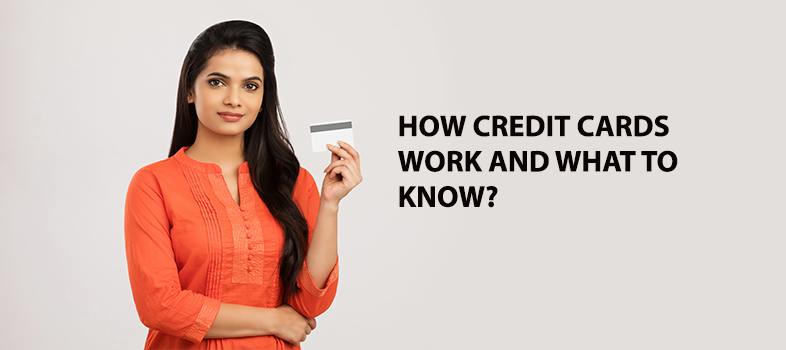A credit card is a convenient mode of payment made of plastic that allows you to make purchases online/ offline without parting cash. So, how does a credit card work?
Let’s examine a credit card closely. What are the dimensions to a credit card:
- Unique identifier
- Expiry date
- Name of the holder
- Logo of Visa or Mastercard
On the backside of the credit card is:
- Magnetic chip
- CVV number
How do Credit Cards work?
Let’s have a glimpse of how a credit card works at the retail store.
Step 1: Once you’ve completed your purchases at the store, you can head towards the payment counter for a credit card payment. The executive will swipe your card or insert it into their point of sale machine. In both situations, you will have to insert your PIN for authentication.
Step 2: The machine reads the card chip to identify the customer and sends information along with the PIN to the issuing bank. If everything gets marked correctly, the bank approves the purchase.
Step 3: Here if the transaction gets approved, the machine prints the charge slips/receipts where the retailer keeps one and hands over the other to the customer. Very rarely, the retailer will request you to sign a copy of the charge slip.
The payment made reflects in the next statement and the store receives the money after 2-3 days. The entire process is easy, fast & seamless, working with robust systems and technology.
Now let’s look at how a Credit Card works remotely
How do Credit Cards work online?
When making an online payment, the website will ask you to submit the following details:
Choose between Visa/Mastercard
Once clicked on pay, the information is sent via a payment gateway to the bank. The bank sends an OTP to your registered email ID for authenticating the transaction. Once you insert the correct OTP, your transaction is marked complete.
Now let’s look at a few terminologies related to credit cards & their working:
- Interest: This is an important determinant of Credit Cards. When using a Credit Card, you’re borrowing money from the issuer. It’s similar to taking a loan for which you will have to pay interest. Interest is applicable only if the bill is unpaid over a month.
- Credit limit: Every Credit Card has an upper limit beyond which it cannot be used. If you swipe the card for a transaction & it has been tried beyond the capacity, then it rejected by the issuer.
- Billing cycle: This is the stipulated period within which the purchases should be made until you get the bill. If purchases are made at the beginning of the period, you will have a longer time of credit before you make payments.
- Minimum payment: There is a minimum payment to make instead of paying the entire credit card bill. If it’s not done, you will have to pay a charge. You can easily carry forward an amount more than the minimum amount, but you will have to pay interest at least.
- Balance: Balance is the sum you’ve paid using your Credit Card, but haven’t been paid.

